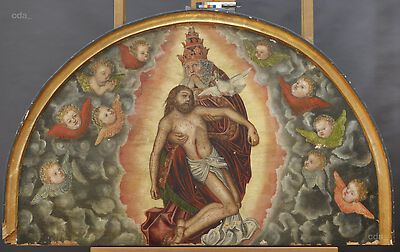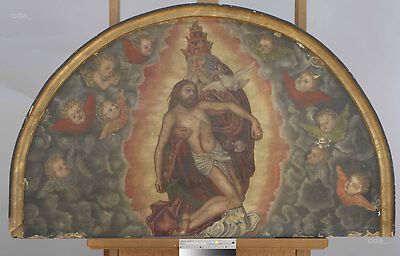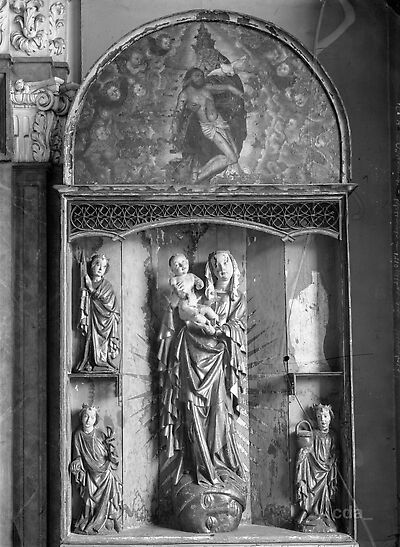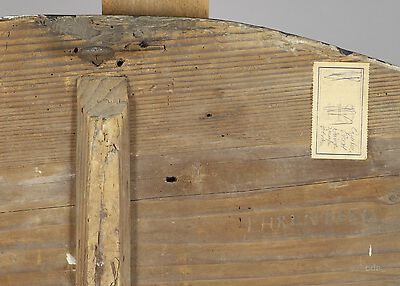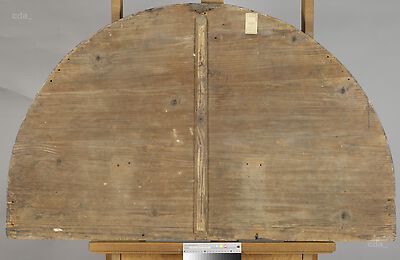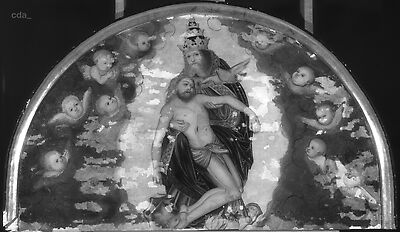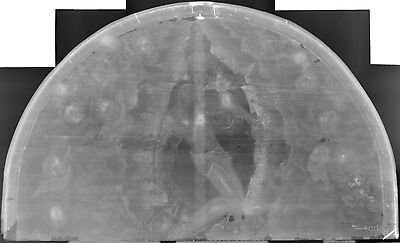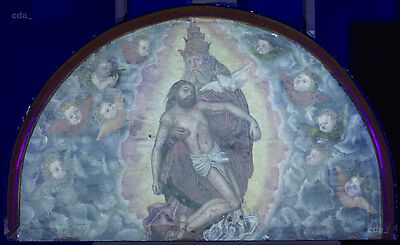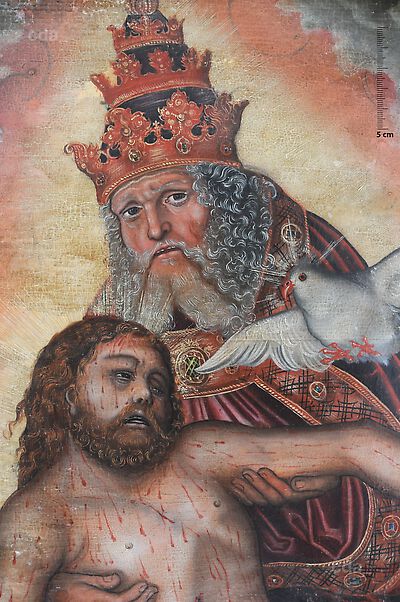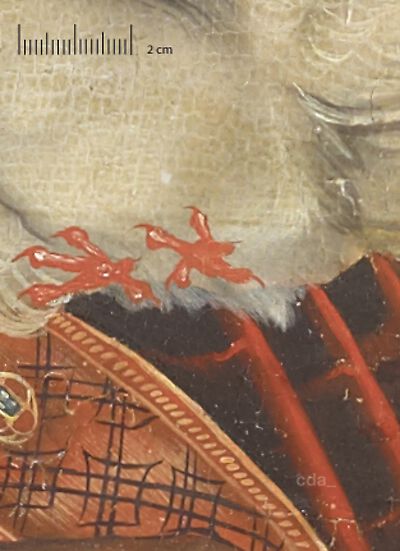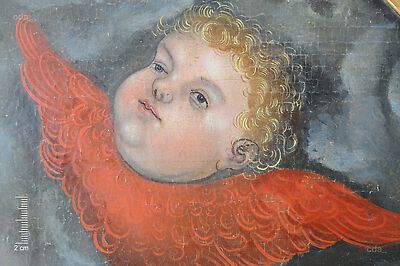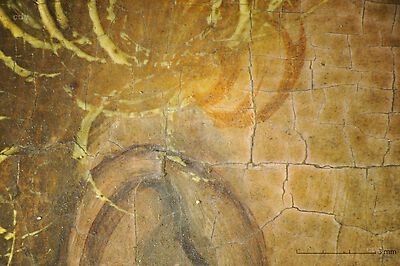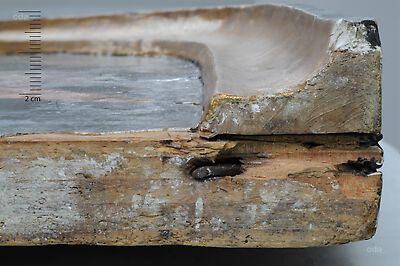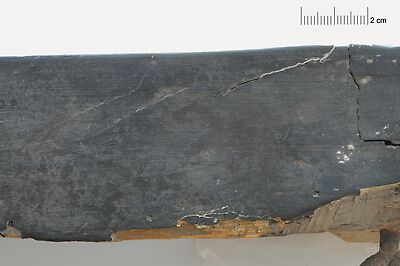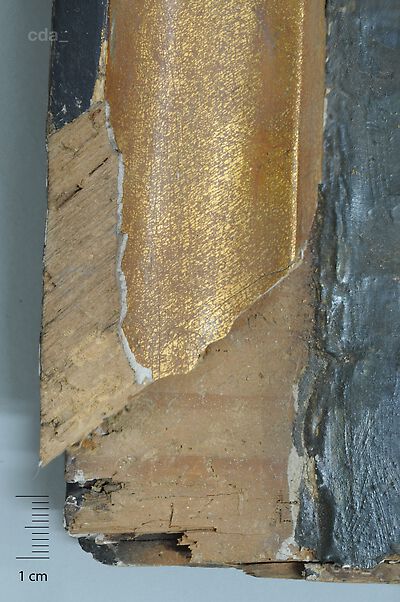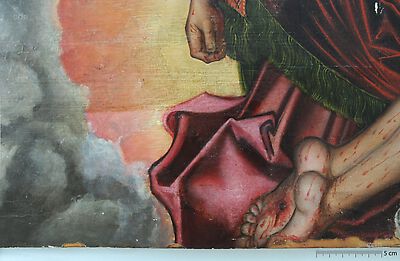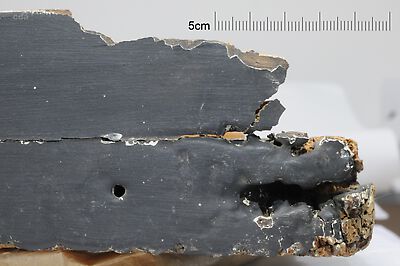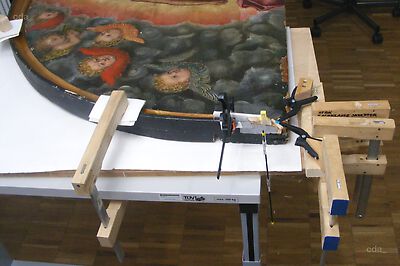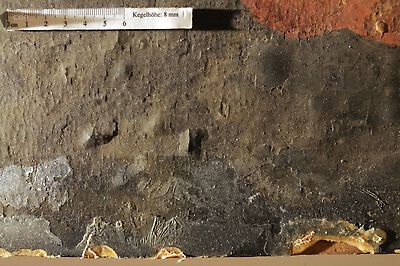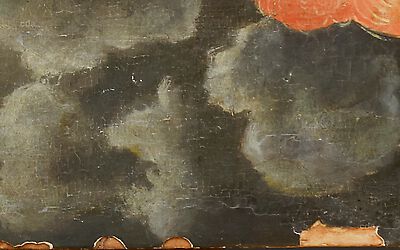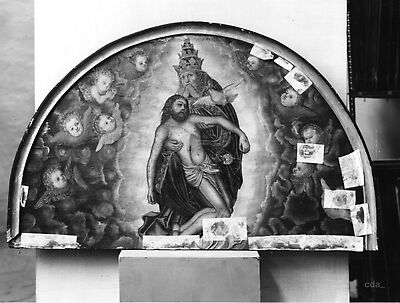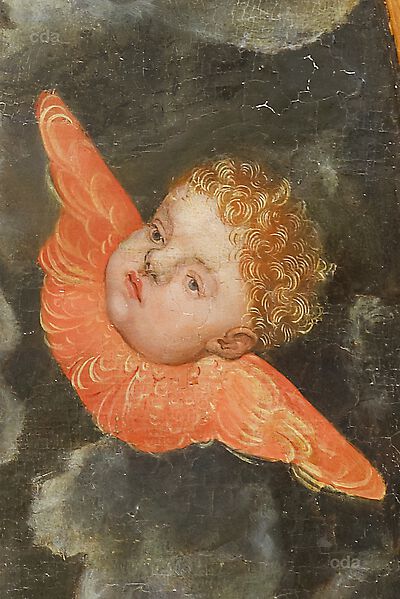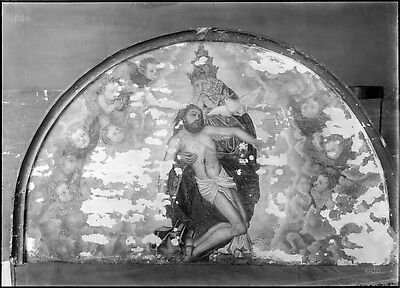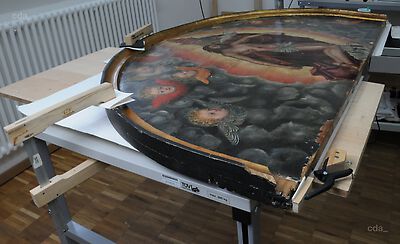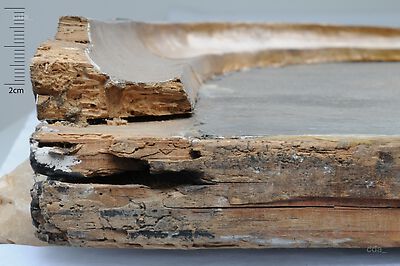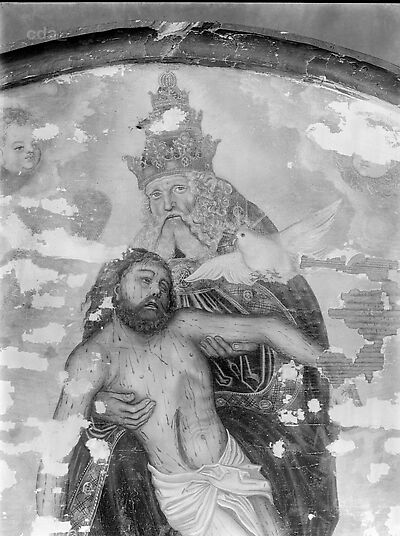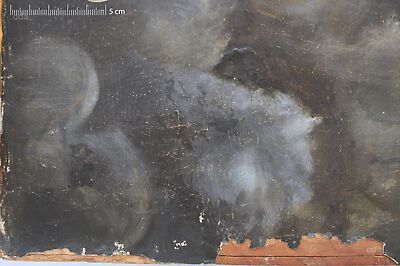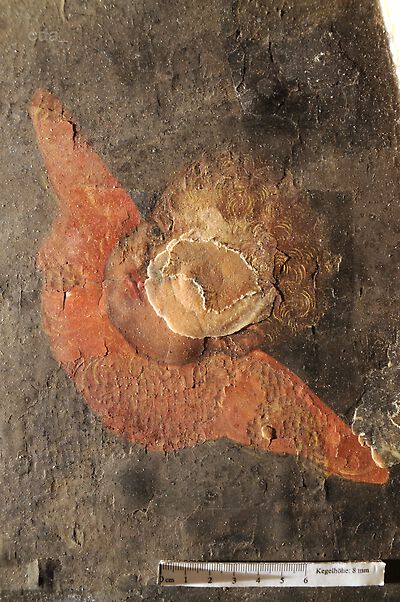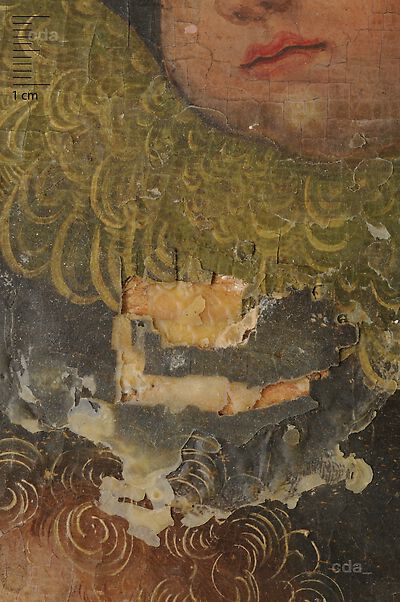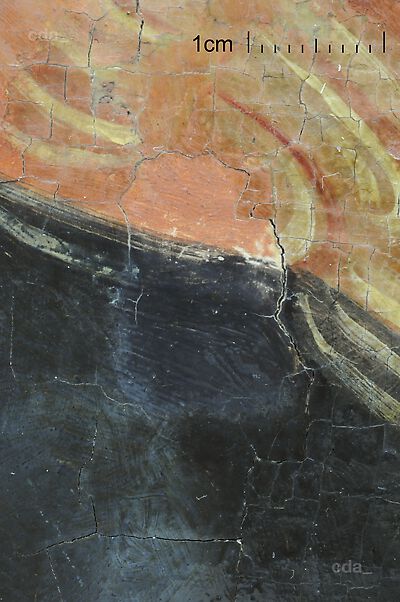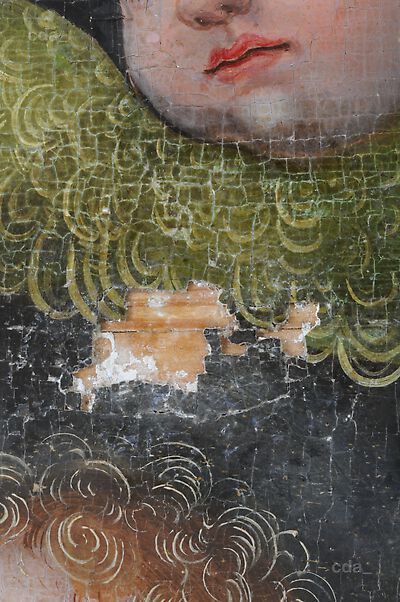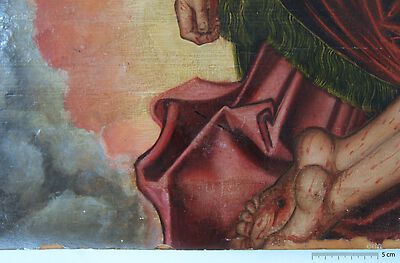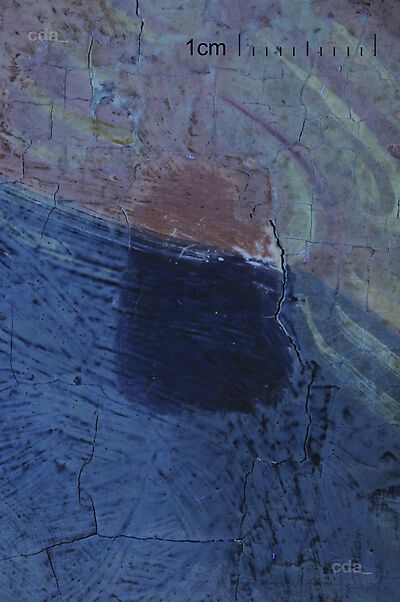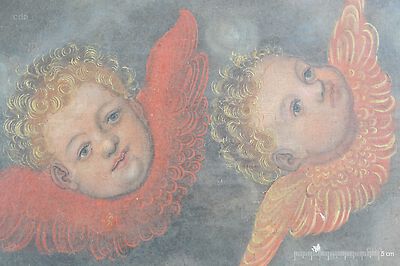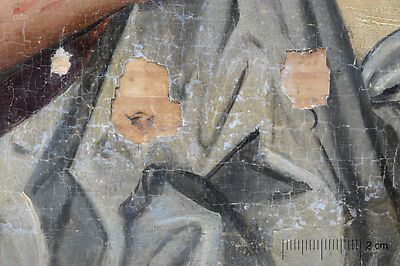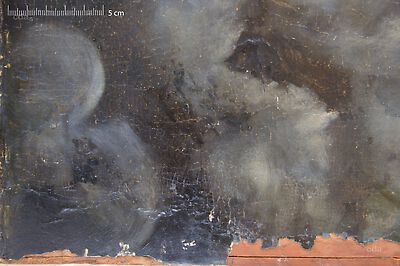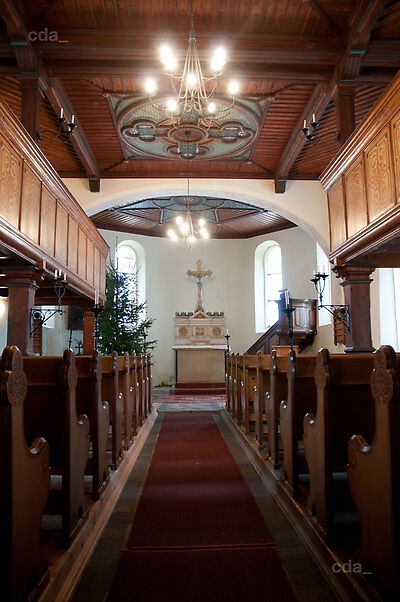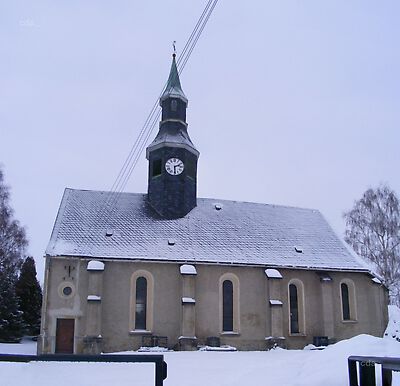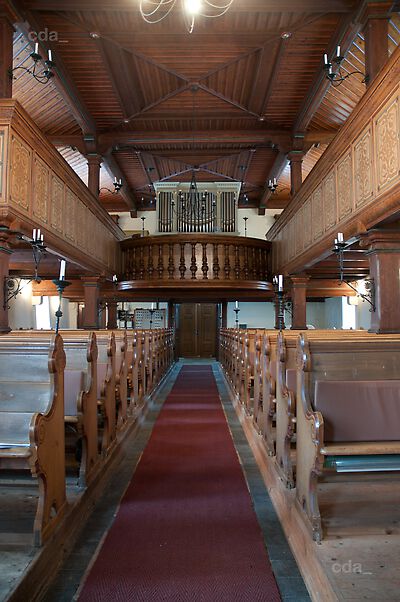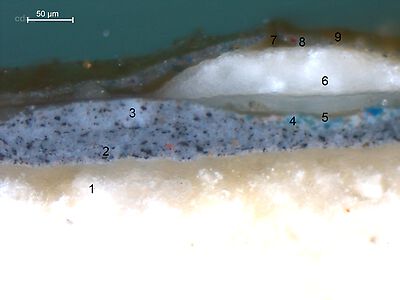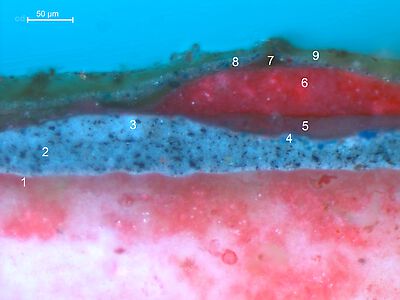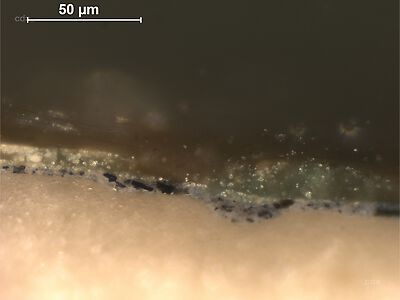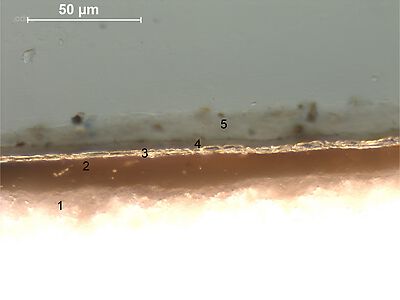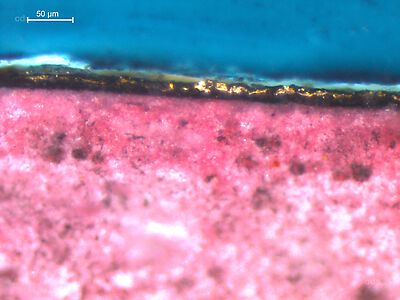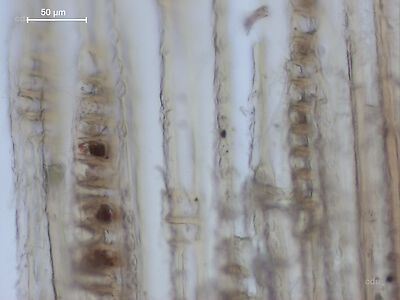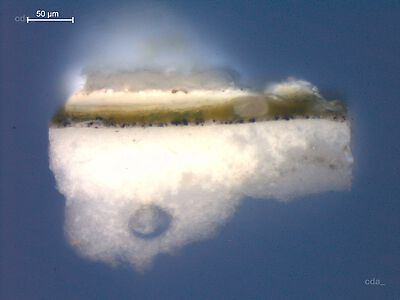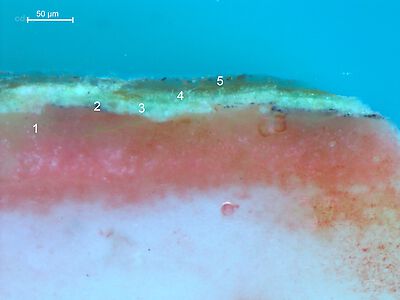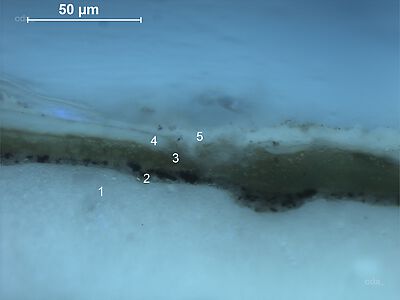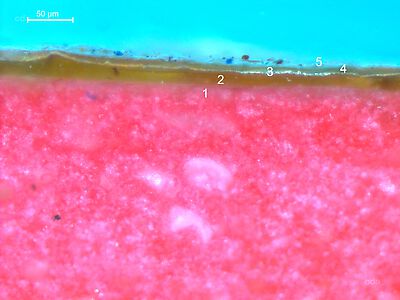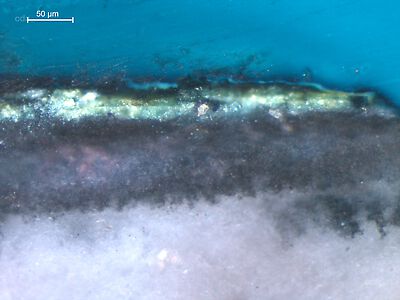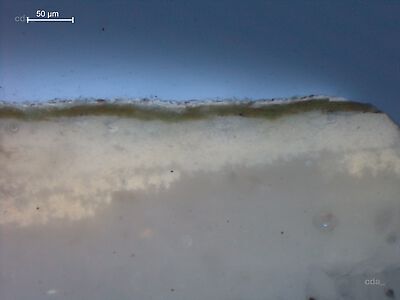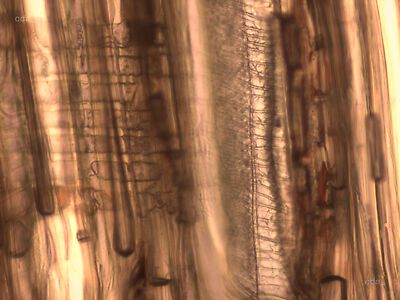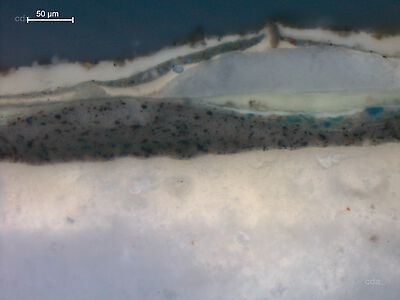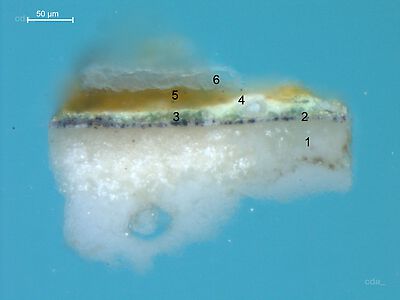The semi-circular panel depicts a representation of the Holy Trinity with the figure of God the Father as the central motif. He holds his son in his arms and the Holy Ghost hovers in front of him in the form of a white dove. God the Father is enveloped in
The semi-circular panel depicts a representation of the Holy Trinity with the figure of God the Father as the central motif. He holds his son in his arms and the Holy Ghost hovers in front of him in the form of a white dove. God the Father is enveloped in a sumptuous red robe decorated with precious stones along the hem and looks at the viewer. His grey haired head is crowned with an equally opulent tiara. Christ lies on his lap with outstretched arms, his body covered with wounds and blood. His body with only a loincloth covering it is turned towards the Holy Ghost as is his gaze. The central group is framed by a Gloriole, flanked at the sides by swirling cloud formations. Ten cherubs with red, green, blue and orange wings look out from the clouds.
[Heiser 2013, 9]
- Attributions
-
Workshop Lucas Cranach the Elder
Lucas Cranach the Elder
Attributions
| Workshop Lucas Cranach the Elder | [cda 2017] |
| Lucas Cranach the Elder | [Heiser 2013, 10] |
- Production date
- about 1515 - 1520
Production date
| about 1515 - 1520 | [Heiser 2013, 10] |
- Dimensions
- Dimensions of support: 83 x 136 x 6 cm
Dimensions
Dimensions of support: 83 x 136 x 6 cm
[Heiser 2013, 14]
- Signature / Dating
None
- Inscriptions and Labels
Verso: - top right:
'EHRENBERG'- above:
in blue paint 'St[...] 416' [crossed-out with ballpoint-pen] on paper, instead 'Eigentum …Inscriptions and Labels
Stamps, Seals, Labels:
Verso: - top right:
'EHRENBERG'
- above:
in blue paint 'St[...] 416' [crossed-out with ballpoint-pen] on paper, instead 'Eigentum Staatl. Kunstsammlg. Dresden'
[Heiser 2013, 48]
- Owner
- Staatliche Kunstsammlungen Dresden
- Repository
- Staatliche Kunstsammlungen Dresden
- Location
- Dresden
- CDA ID
- DE_SKD_SKS_SAV2200
- FR (1978) Nr.
- FR-none
- Persistent Link
- https://lucascranach.org/en/DE_SKD_SKS_SAV2200/
- above:

